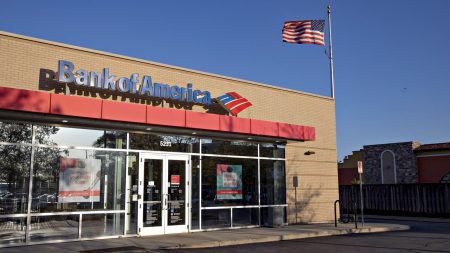Key takeaways
- The U.S. Department of the Treasury is a better match than the Small Business Administration (SBA) for collecting federal student loans, but not ideal.
- The U.S. Treasury’s pilot collection program for defaulted federal student loans underperformed private collection agencies due to leniency.
- Using the wage withholding system for student loan payments to reduce defaults and collection costs is feasible but complex.
- Solutions for wage withholding involve modifying repayment plans to be based solely on earned income.
The federal student loan portfolio is currently managed by Federal Student Aid (FSA) within the U.S. Department of Education. There are proposals to shift this responsibility to other agencies, such as the U.S. Department of the Treasury, as suggested by The Heritage Foundation’s Project 2025 Proposal, or the Small Business Administration (SBA), which the Trump administration has championed.
Let’s explore the feasibility of having the U.S. Department of the Treasury manage the federal student loan portfolio, perhaps by leveraging the U.S. tax system for direct loan collection.
SBA lacks expertise and experience
The Small Business Administration (SBA) presents a significant mismatch for managing the federal student loan portfolio. The SBA’s core expertise lies in facilitating business lending, primarily through a guaranteed loan program where private banks issue loans and the government offers protection against default. So, the SBA has minimal experience in managing a large-scale federal direct loan program.
The guaranteed loan model stands in stark contrast to the vast majority of the federal student loan portfolio, where all new loans are originated through the Direct Loan Program. Only about 10 percent of federal student loan dollars remain in the FFEL program, a guaranteed student loan program that ended in 2010.
Furthermore, the sheer scale and inherent complexity of the federal student loan portfolio — which involves extensive customer service demands for millions of borrowers — dwarf the operational scope of the SBA’s existing loan programs.
Treasury is a better fit
In contrast, the U.S. Department of the Treasury has expertise in managing money and direct interactions with the public, particularly through its tax collection functions.
The U.S. Treasury already plays a role in federal debt recovery via the Treasury Offset Program (TOP), which collects defaulted federal student loans. Moreover, federal student loan interest rates are based on the 10-year Treasury Note, and the loans themselves are ultimately funded by the U.S. Treasury.
While neither the SBA nor the U.S. Treasury is an ideal choice for managing the federal student loan portfolio, the Treasury’s existing financial infrastructure and debt collection mechanisms may be a better match.
However, a 2014-2015 pilot project designed to test the Treasury’s effectiveness in collecting defaulted federal student loans went poorly.
Treasury pilot shows collecting federal loans is difficult
This randomized trial, influenced by proposed legislation, evaluated the “efficiency and effectiveness” of Bureau of the Fiscal Service employees as potential debt collectors and used private collection agencies (PCAs) as a control group.
The trial revealed that the U.S. Treasury achieved a mere 4 percent success rate in collecting defaulted loans, significantly underperforming the control group’s 5.5 percent success rate. Additionally, the cost incurred by the Treasury for these collections was greater than that of the PCAs.
Collecting federal student loans is more complicated than collecting other federal debts. Additionally, the Treasury was not as aggressive as the private collection agencies (PCAs) and they did not do enough to get the borrowers on the phone. Initially, the Treasury limited borrower contact to a maximum of one call per week, far fewer than the typical collection agency. The Treasury also did not threaten wage garnishment during the first 11 months of trying to collect a defaulted federal student loan.
After the Treasury sent out wage garnishment notices, call-in rates tripled and 22 percent of these borrowers engaged in discussions about repayment options.
Wage garnishment resumes for defaulted federal student loan borrowers
This summer, 5.3 million defaulted borrowers will receive a notice from the Treasury that their earnings will be subject to administrative wage garnishment.
Learn more
Could federal student loans be collected through wage withholding?
The idea of integrating student loan collections into the wage withholding system, as some countries do, was explored in a 1995 feasibility study. Doing so would give the Treasury a powerful tool for collecting student loan payments. However, launching such a system in the U.S. would be complex:
- Income-driven repayment (IDR) plans and AGI: Income-driven repayment plans are based on adjusted gross income (AGI) from a prior tax year, which includes both earned and unearned income. Employers, however, only have information about a borrower’s current earned income, not unearned income. Withholding based on AGI would require a complicated and impractical annual reconciliation process due to the variability of unearned income.
- Multiple jobs: Some taxpayers have multiple jobs, which could complicate withholding calculations if payments are based on total or discretionary income, as employers may not be aware of other employment or spousal income.
- Family size and dependents: Some income-driven repayment plans, such as Income-Contingent Repayment, Income-Based Repayment and Pay As You Earn, factor in family size or the number of dependents. Employers typically do not have this information.
Despite these challenges, there are several solutions that could adapt the student loan repayment plans to better fit a withholding system.
- Basing income-driven repayment on earned income: Basing income-driven repayment plans solely on earned income, rather than AGI, would simplify withholding. Analysis of 2022 IRS Statistics of Income shows that earned income represents a substantial portion of AGI for low- and moderate-income borrowers (e.g., 88 percent for AGI under $50,000 and 81 percent for AGI under $100,000), suggesting minimal impact on payments for these groups. Borrowers with very high AGI ($500,000 or more) who have a low percentage of earned income could potentially be limited to a standard repayment plan.
- Borrower disclosure of family size: Borrowers could inform employers about their family size or the number of dependents, mirroring the current W-4 form process.
- Self-reporting of level payment amounts: Borrowers on a level repayment plan, such as standard repayment, could provide their employers with their monthly payment amount. Employers would withhold the higher of this amount or a percentage of earned income.
- Ending withholding: Borrowers could present their employers with a zero-balance statement from the federal government to halt withholdings.
There are several benefits of using the wage withholding system to collect student loan payments. It would avoid the cost of collections, which is over $1 billion a year, and significantly reduce default rates. Furthermore, this system would base payments on current income, as opposed to prior income, naturally adjusting to income fluctuations. It is conceptually similar to administrative wage garnishment (AWG), which is based on 15 percent of disposable income.
Bottom line
The current administration must weigh proposals to shift the oversight of the federal student loan portfolio to another federal agency, such as the U.S. Treasury or the Small Business Administration. The Treasury has more relevant experience and expertise than the SBA. It has an existing role in federal debt recovery and more experience in providing customer service to consumers.
Past studies indicate that transferring responsibility for collecting on federal student loans to the Treasury might not yield the same outcomes as the Education Department’s current system. However, integrating student loan collections into the wage withholding system, while complex to implement, might reduce default rates and save on collection costs.
Current federal student loan borrowers should know that none of these proposed changes are set in stone and none will happen without warning. Shifting oversight over the federal student loan portfolio to another federal agency will require an act of Congress.
Read the full article here









